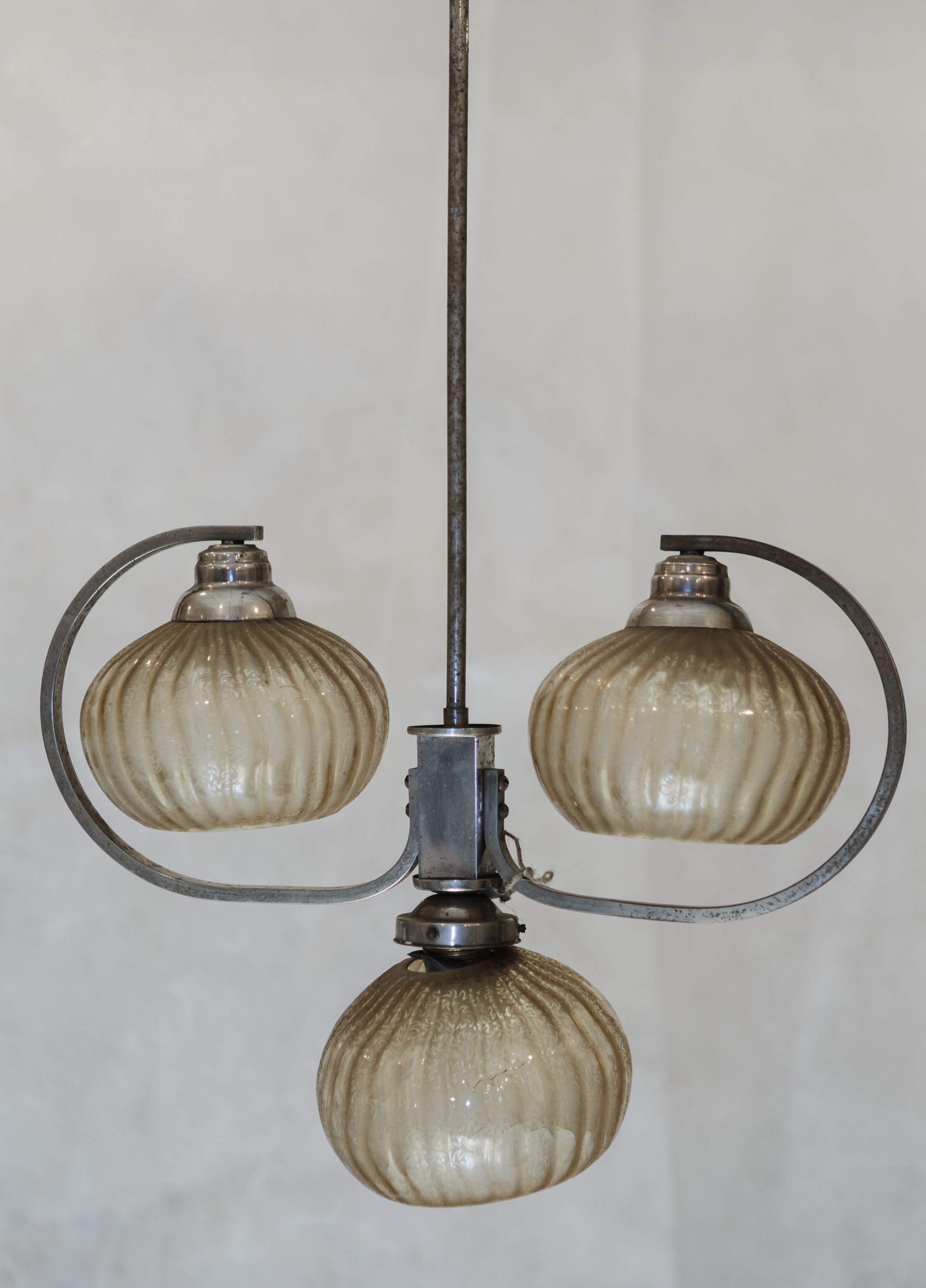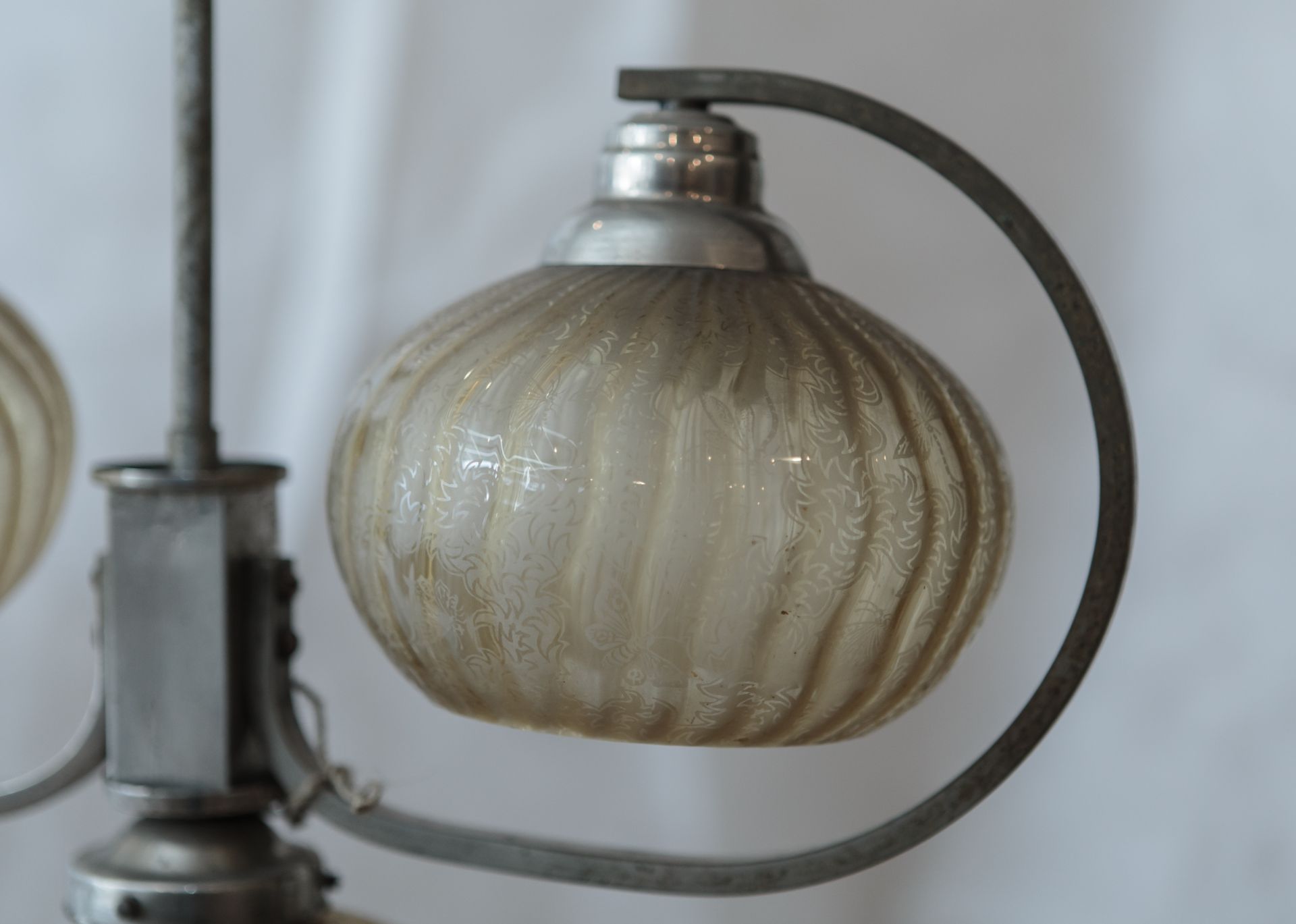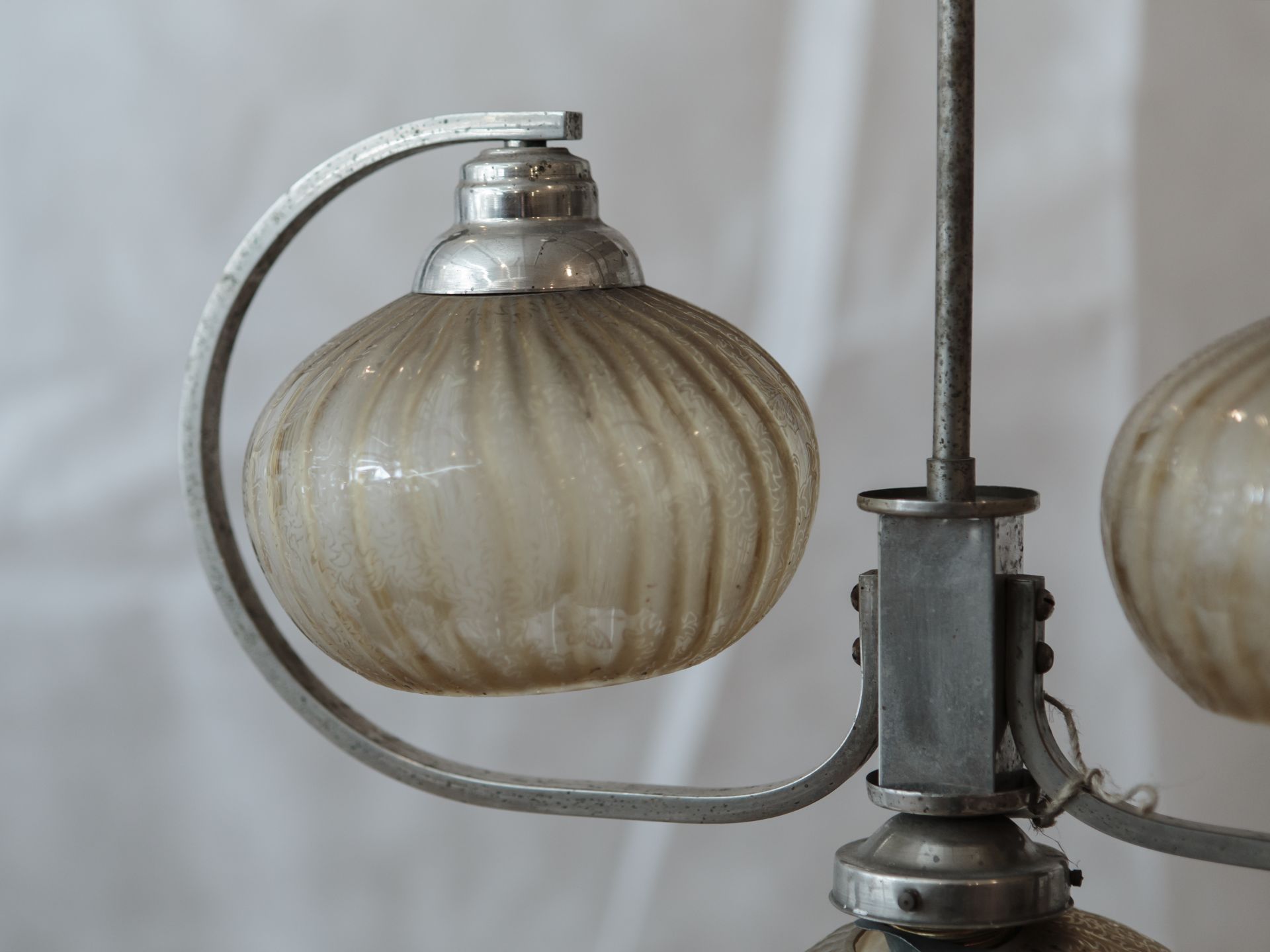Lithuanian National Museum of Art
Inv. No. MPM-1209
Address: Arsenalo str. 3A, Vilnius
Time of origin: 1930–1939
Place of origin: Poland, Warsaw (?)
Material, Technique: copper alloy: casting, repoussé, nickel plating, glass: casting, metal etching (?)
Dimensions: height – 87 cm, diameter – 47 cm
In the early 20th century, manifestations of minimalism and functionalism in the design of chandeliers started to appear. Josef Hoffman, a famous Austrian architect and designer, belonged to the art workshop Wiener Werkstätte founded in Vienna in 1903. In the same year, he developed a model M109 of nickel plated table lamp. At the same time, Spanish designer Mariano Fortuny designed a table lamp with a glossy chrome plated finish. The chandeliers of constructive forms with glossy chromed or nickel-plated tubes and cups of geometric shapes were widely produced from the late 1920s. Based on the existing catalogues of Polish chandelier manufacturers, such chandeliers were produced by A. Marciniak and brothers Borkovski electrolier factories in Warsaw in 1938–1939.
The chandelier with clear geometric lines and minimalistic décor is preserved at the Lithuanian National Museum of Art. It consists of a stem with two arms and three sockets with hoods for light bulbs. Metal parts are cast, repoussed from a copper alloy and nickel plated. Glass hoods of brownish colour with curved repoussed segments provide delicacy and playfulness for a modern chandelier. The use of acid technique created a fine-grained floral pattern on the surface with dragonflies and butterflies.
This typical mass-production chandelier of the 1930s was probably used in secular public or private interiors.
Literature and sources:- Bracia Borkowscy zakłady elektrotechniczne: Świeczniki, katalog Nr. 48, Warszawa, 1939, in: Lenkijos nacionalinės bibliotekos Socialinio gyvenimo dokumentų skaitykla, XIV A3.
- Fiell Charlotte & Peter, 1000 lights: 1878 to present, Cologne: Taschen, 2005, p. 87, 97.
- Marciniak fabryka żyrandoli elektrycznych: katalog Nr. 31, Warszawa, 1938, in: Lenkijos nacionalinės bibliotekos Socialinio gyvenimo dokumentų skaitykla, XIV A3.


